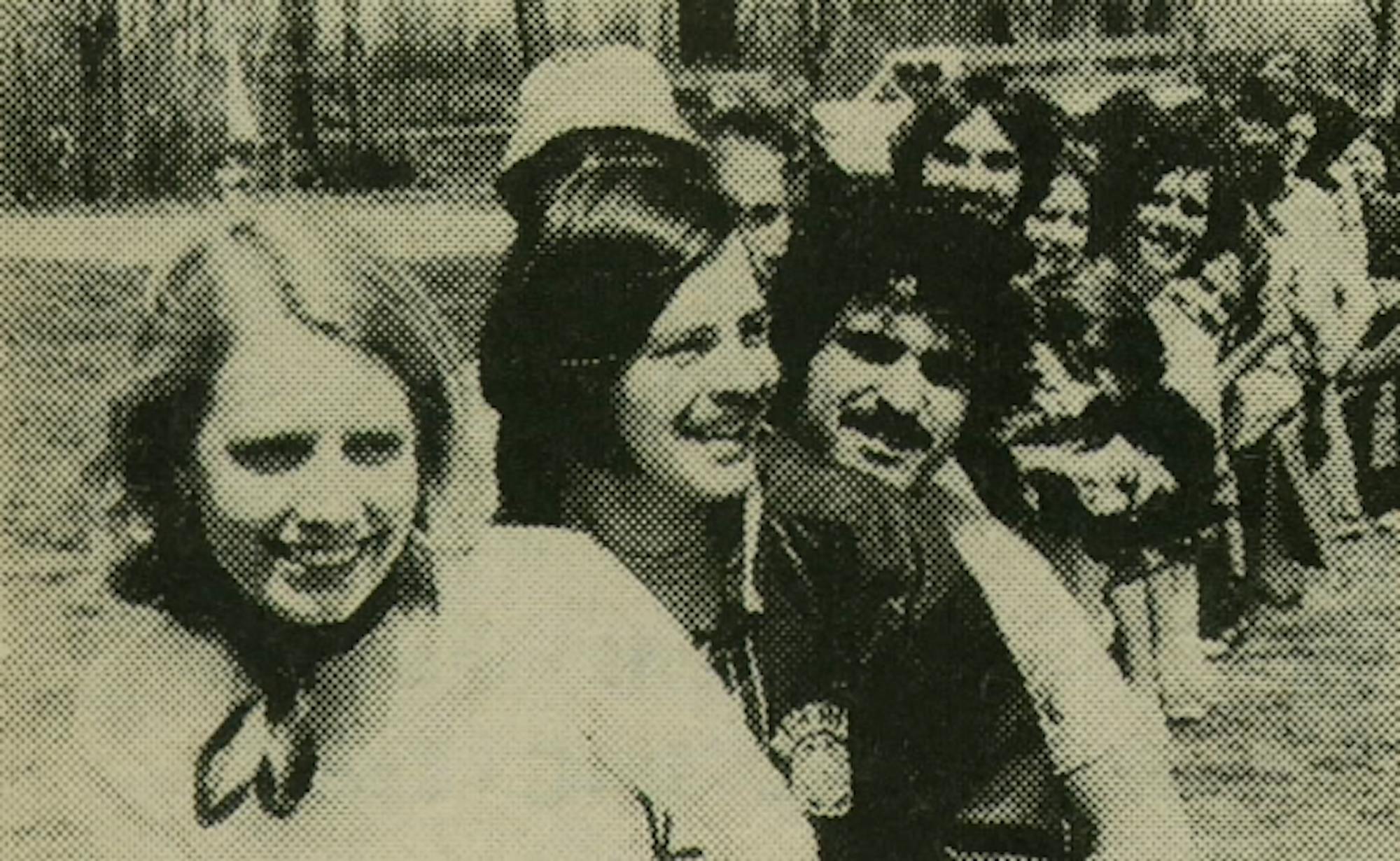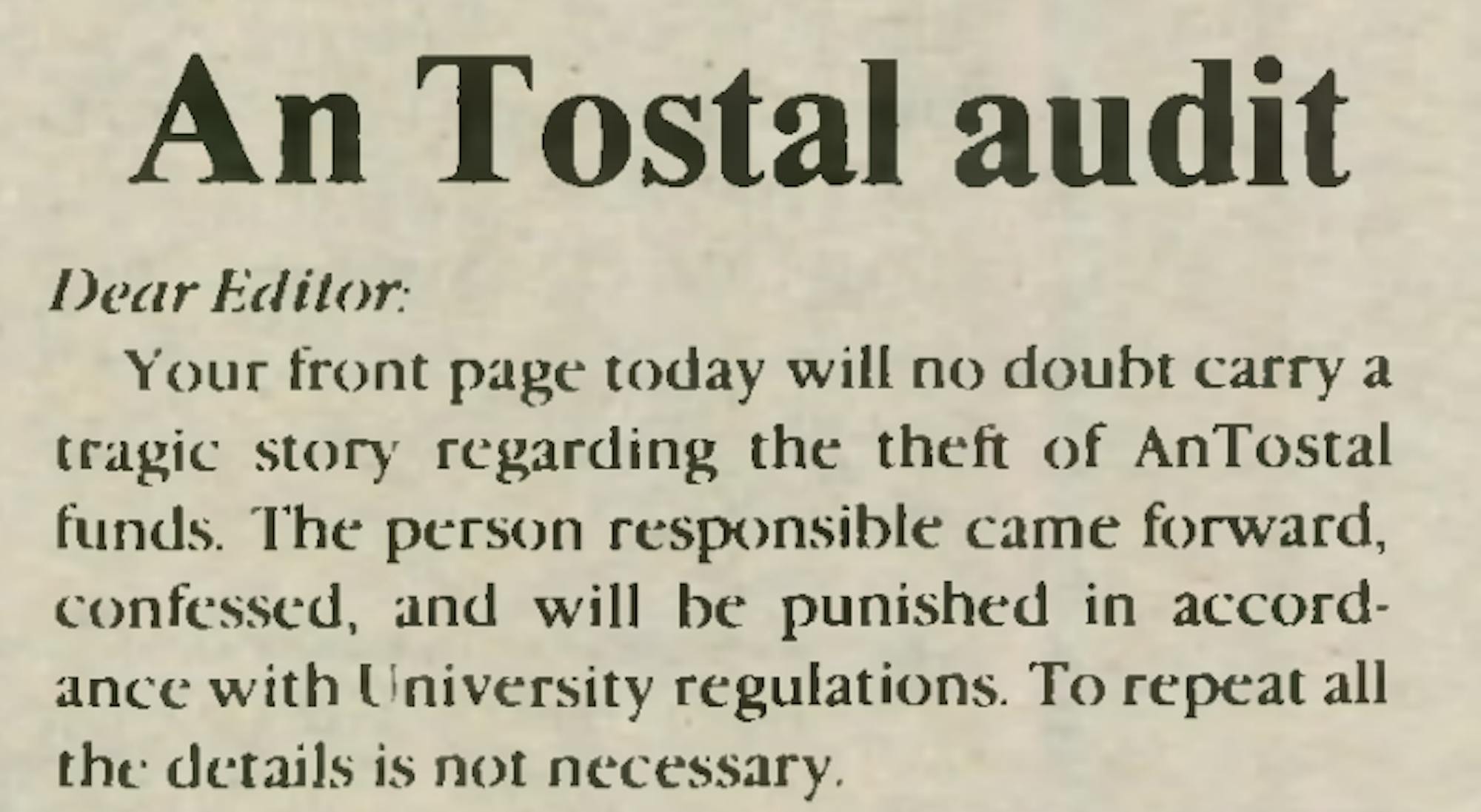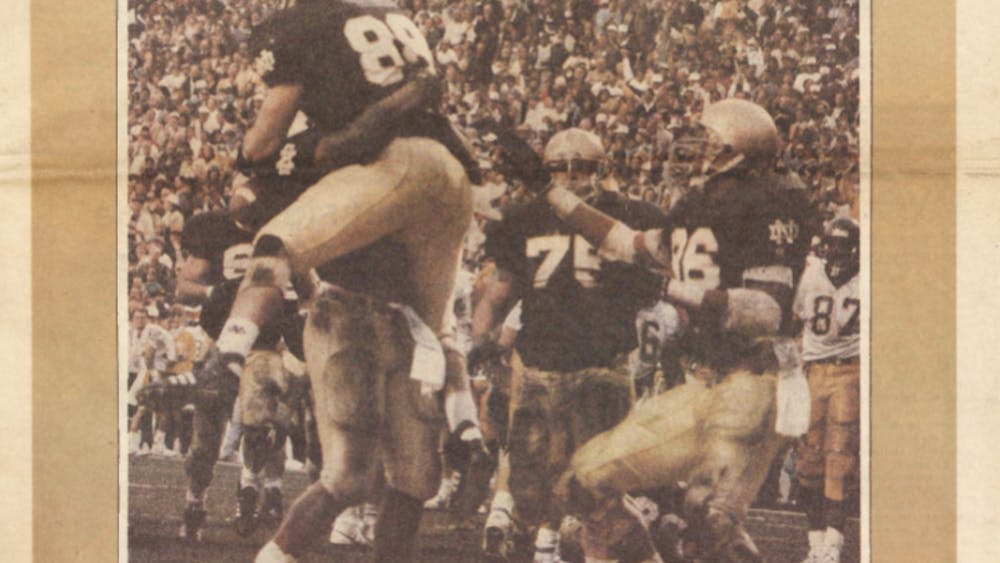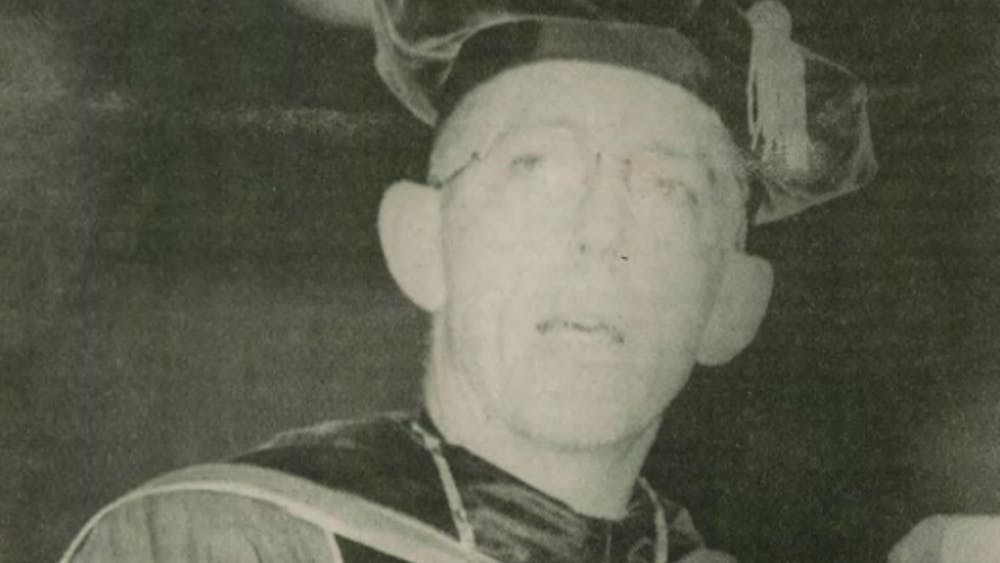

AnTostal’s unpredictable origins
Feb. 25, 1969 | April 22, 1971 | Jim Brogan | Researched by Spencer Kelly
This year’s AnTostal featured wholesome activities like “Wellness Wednesday Morning Yoga,” karaoke and a movie screening at Notre Dame Stadium. However, the event has not always looked like this — Observer articles from February 1969 and April 1971 note the wild activities of earlier AnTostal celebrations. The second annual AnTostal took place May 8, 1969, and commenced with pie-throwing and dunking contests. Right from the start, the activities appear decidedly raucous by today’s standards, yet harmless overall. That same year, the main event was Friday’s beach party at St. Joseph’s Lake, complete with strobe lights and a live band. Things then escalated quickly. Students planned to ignite “the world’s biggest bonfire” at the end of the night, targeting a height of 150 feet. In terms of fuel for the fire, Pangborn hall president Marty Bree said “all the guys in Pangborn are willing to contribute their desks.” The shenanigans continued on Saturday with activities including a tug-of-war, a bed race, a “no hands” pie-eating contest, flour blowing, a water brigade, a pig chase and cow milking. To cap off the night and the AnTostal weekend, students attended a barn dance with “probably 25 half-kegs” of beer. Not to be outdone by their predecessors, organizers of the fourth annual AnTostal in 1971 planned some equally absurd events. New additions to the activities lineup included the Jello Toss, the “Old Tire Race” and the “Jocks vs. SMC basketball game,” in which Notre Dame men had to wear boxing gloves while playing hoops against Saint Mary’s students. Back from previous years was the flour blowing, dunking booth, pie-eating contest, tug-of-war, cow milking and pig chasing. The second annual “Kissing Marathon” was a highly anticipated returning event — students were eager to see if anyone could beat last year’s winner, J.T. Lyons, who locked lips with his partner for six hours and 35 minutes. “[Lyons] will be back to defend his title,” news writer Jim Brogan wrote, “except this year with a different girl.” It is hard to imagine Notre Dame approving most of these activities today — and perhaps that’s for the best.Preparations for the 1976 festival begin months in advance
Jan. 29, 1976 | Joe Straub | Researched by Maggie Clark
AnTostal at Notre Dame is a big deal — it is now, and it has been for many years. Like other major campus events, AnTostal requires intricate planning and preparation in order to ensure ultimate success. But what does a successful AnTostal look like? Joe Straub, a staff writer at the Observer, noted that “AnTostal is a compilation of various events and activities. A concert is usually included and past performers have been Santana and The Beach Boys.” It doesn’t get much bigger than the Beach Boys in the 1970s, does it?
AnTostal organizer charged with theft of $3000 from festival’s account
David Sarphie and Dr. James M. McDonnell | Nov. 1, 1983 | Researched by Evan McKenna
It was April 1983 — the golden age of AnTostal. Although the annual event had been a success at the University since its inception in 1968, the festivals of the early ‘80s saw massive success, drawing in large budget surpluses from 1980 to 1982.And at first, 1983’s 16th annual AnTostal seemed to be no different. According to the former director of student activities Dr. James M. McDonnell, the year’s standard festivities sported the highest participation rate in the event’s history, and new additions to the itinerary — from noon-time concerts to quad-wide gatherings — were well-attended. So why did an internal audit of the AnTostal bank account — requested by McDonnell in October 1983 — reveal a deficit of $5,410.31? The answer isn’t so simple. On top of a $2000 loss from one of the weekend’s aforementioned concerts, the account also took hits in the form of $800 worth of damage sustained by rented vehicles and the theft of $600 worth of sound equipment.But the account’s staggering deficit was brought about by more than just lackluster attendance, property damage and petty theft. A closer look at the audit would reveal the particularly strange financial activity that seemed to drive AnTostal’s record into the red: Between the months of Sept. 1982 and March 1983, the account saw a number of overstated assets, as well as cashed checks made out to a personal account. Embezzlement was afoot.The owner of the aforementioned personal account — whose identity remained confidential per the disciplinary guidelines of du Lac — called McDonnell to confess to the theft shortly after the audit request, according to a Oct. 31, 1983 statement from the Office of Student Activities. And justice came quick — the person appeared at a meeting with University Auditors to review the items of the audit, underwent a hearing conducted by Dean of Students James Roemer, was charged with theft and signed a promissory note pledging to repay student government the stolen $3000.In a Letter to the Editor appearing just three pages later, McDonnell wrote about the incident and its ramifications, beginning with a very brief recap.“[The Observer’s] front page will no doubt carry a tragic story regarding the theft of AnTostal funds,” McDonnell wrote (although the story in question appeared on page three). “The person responsible came forward, confessed, and will be punished in accordance with University regulations. To repeat all the details is not necessary.”









